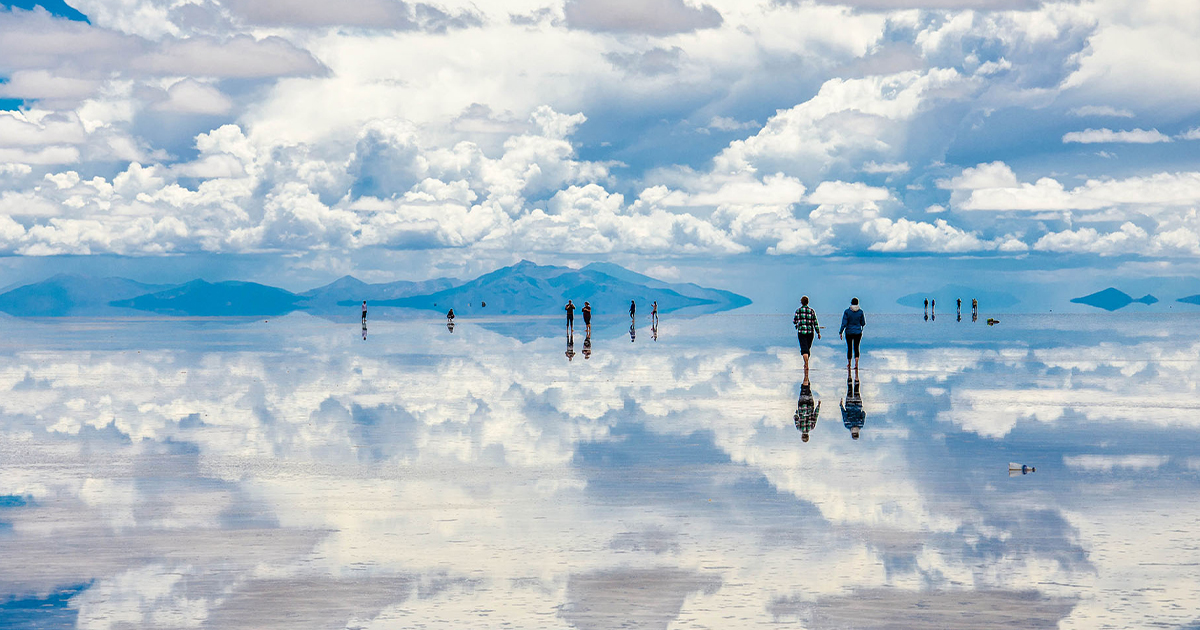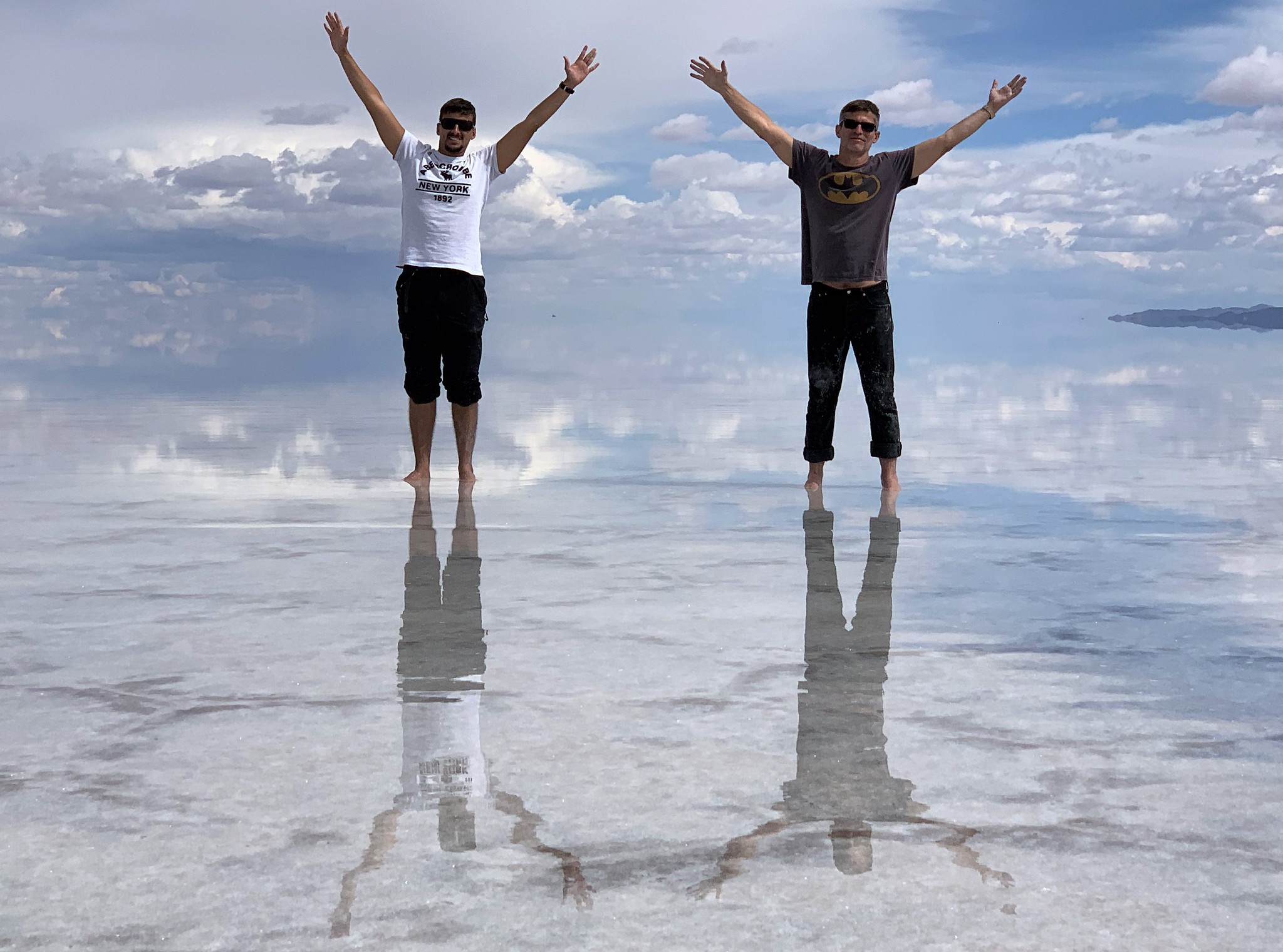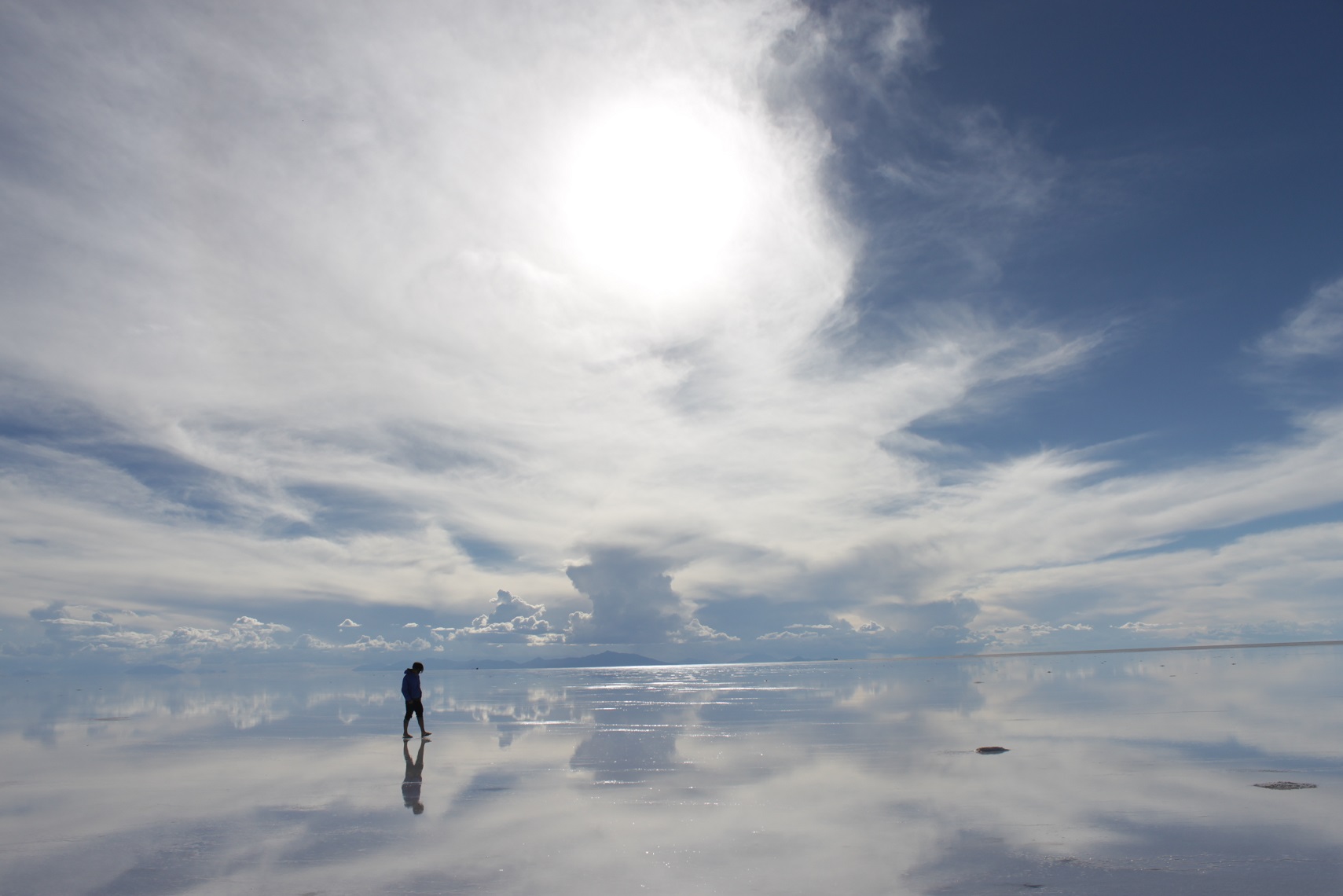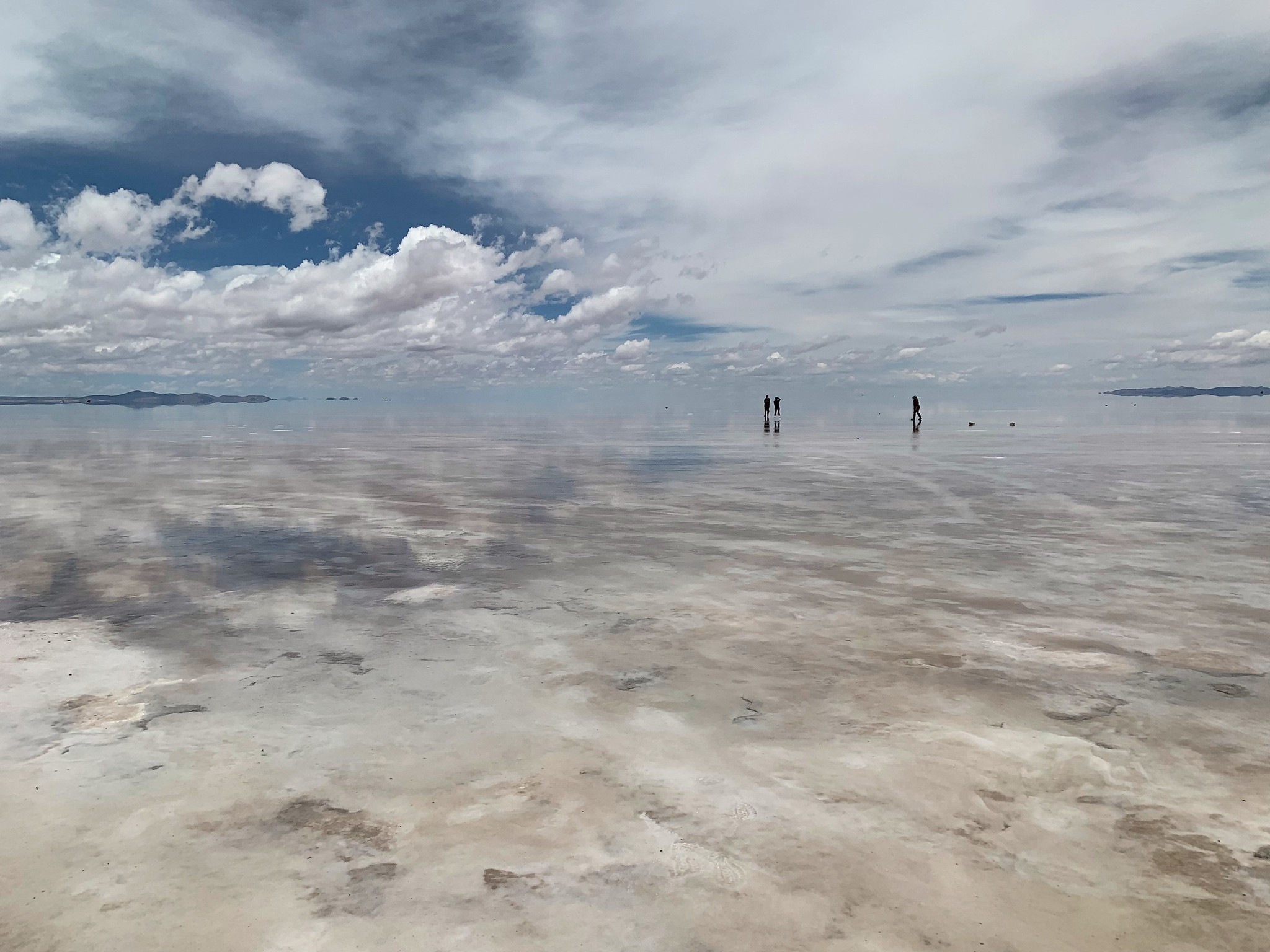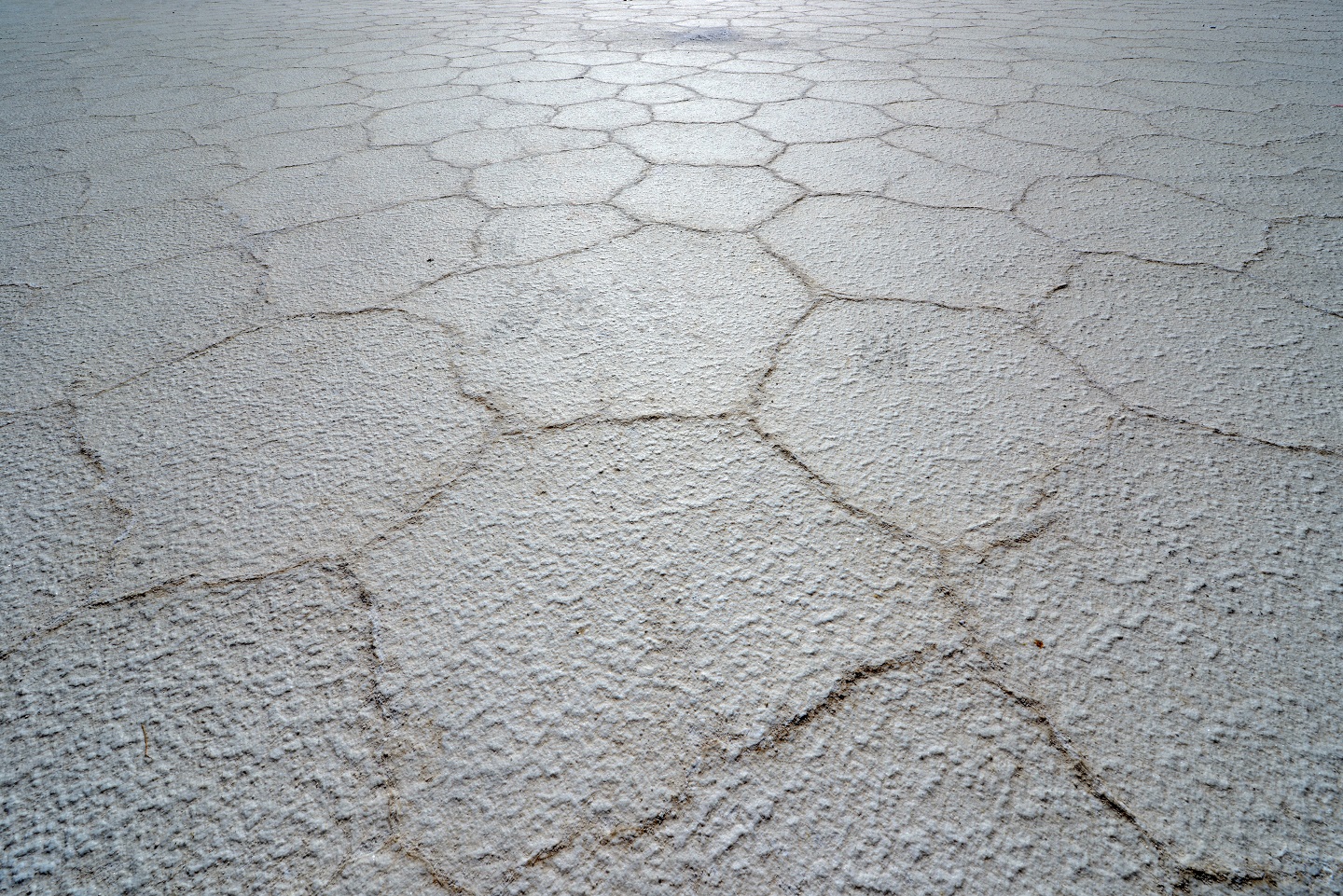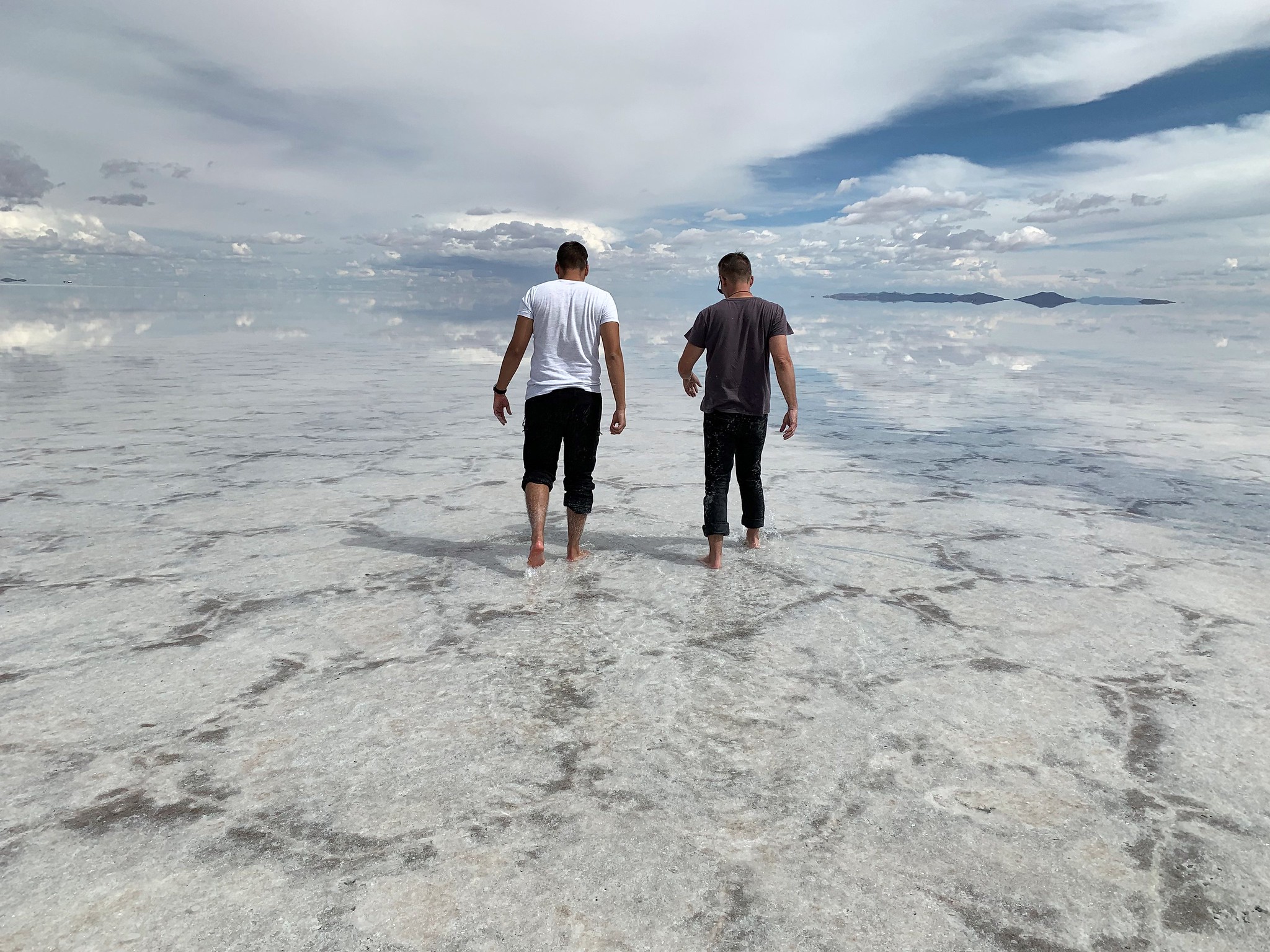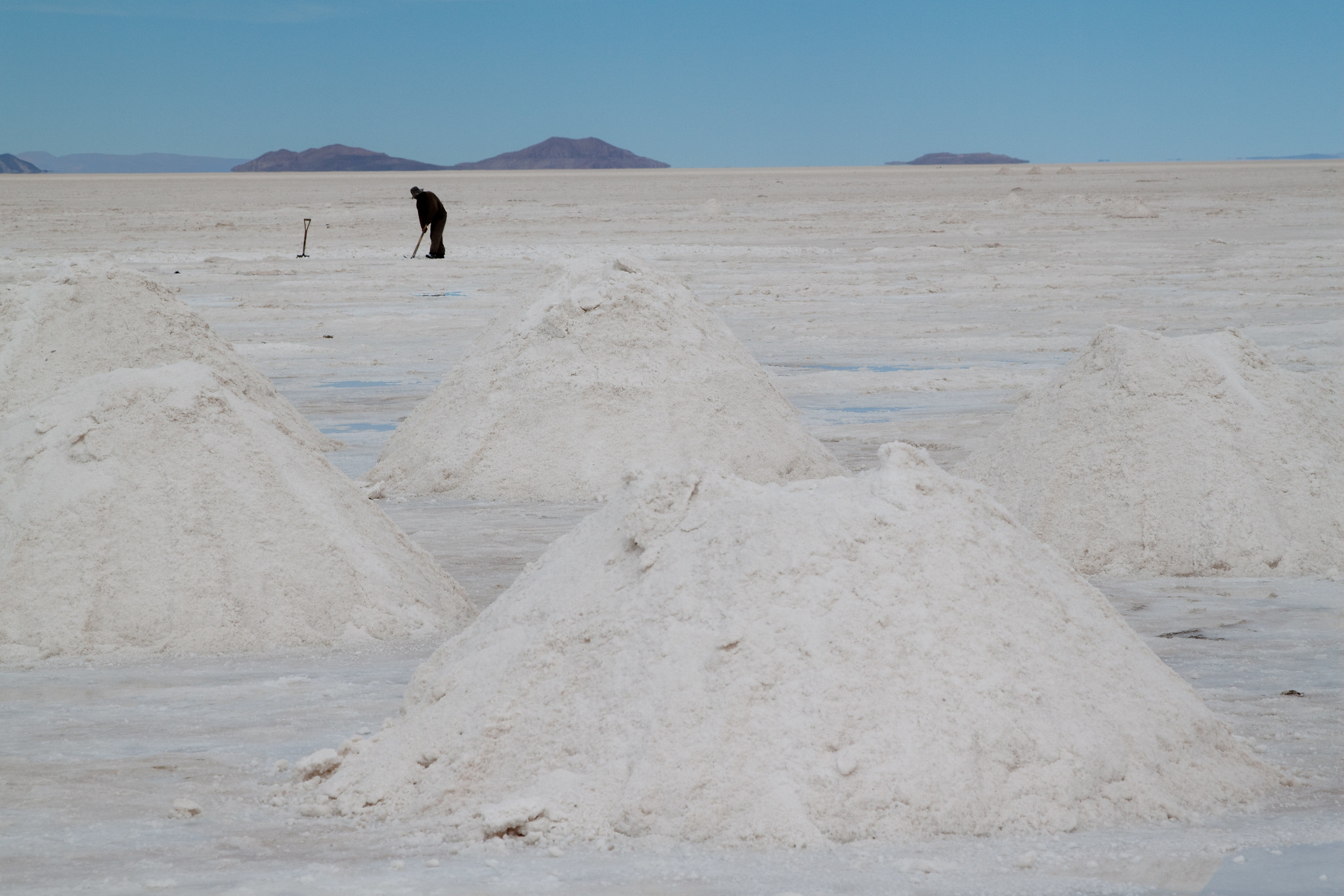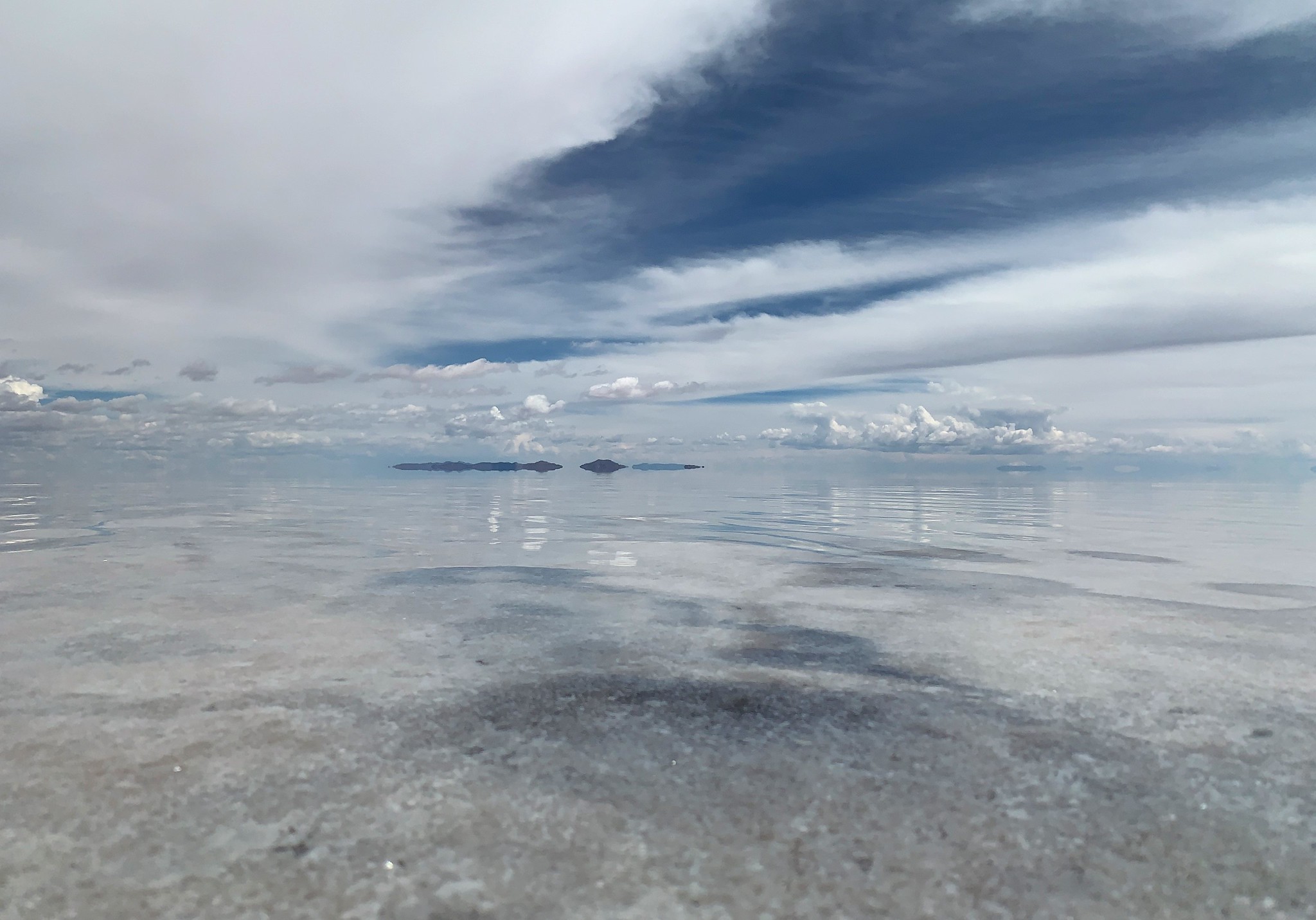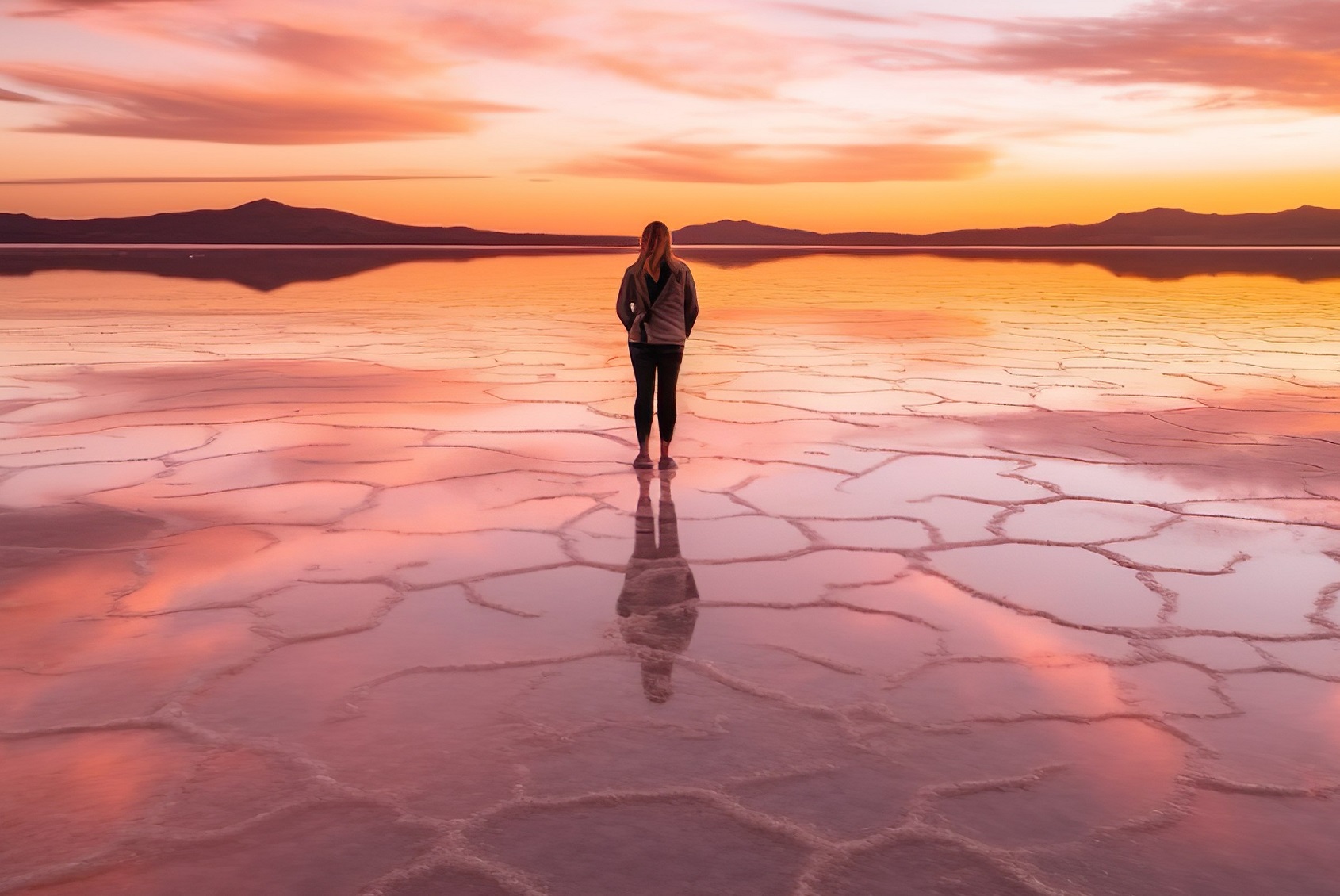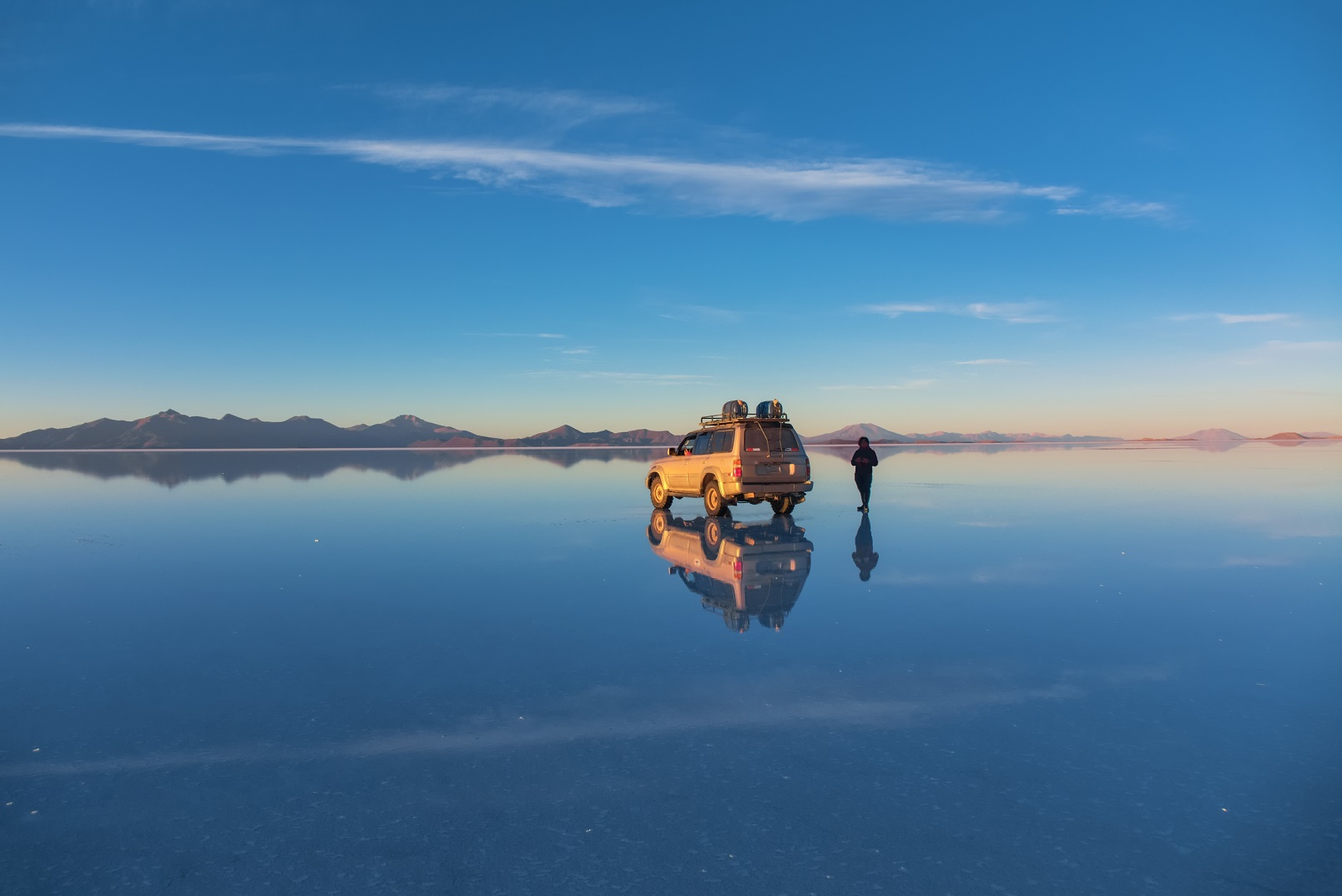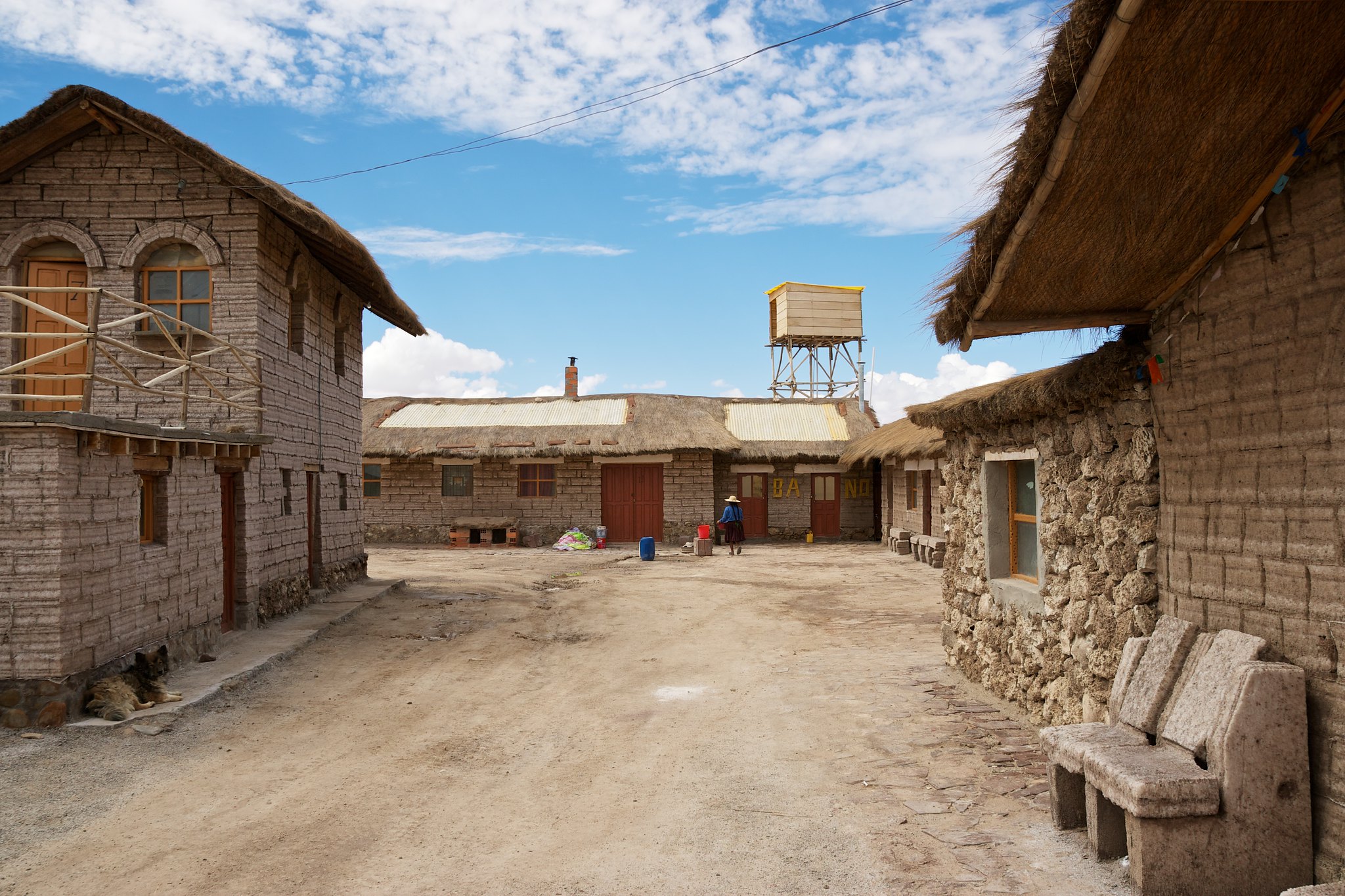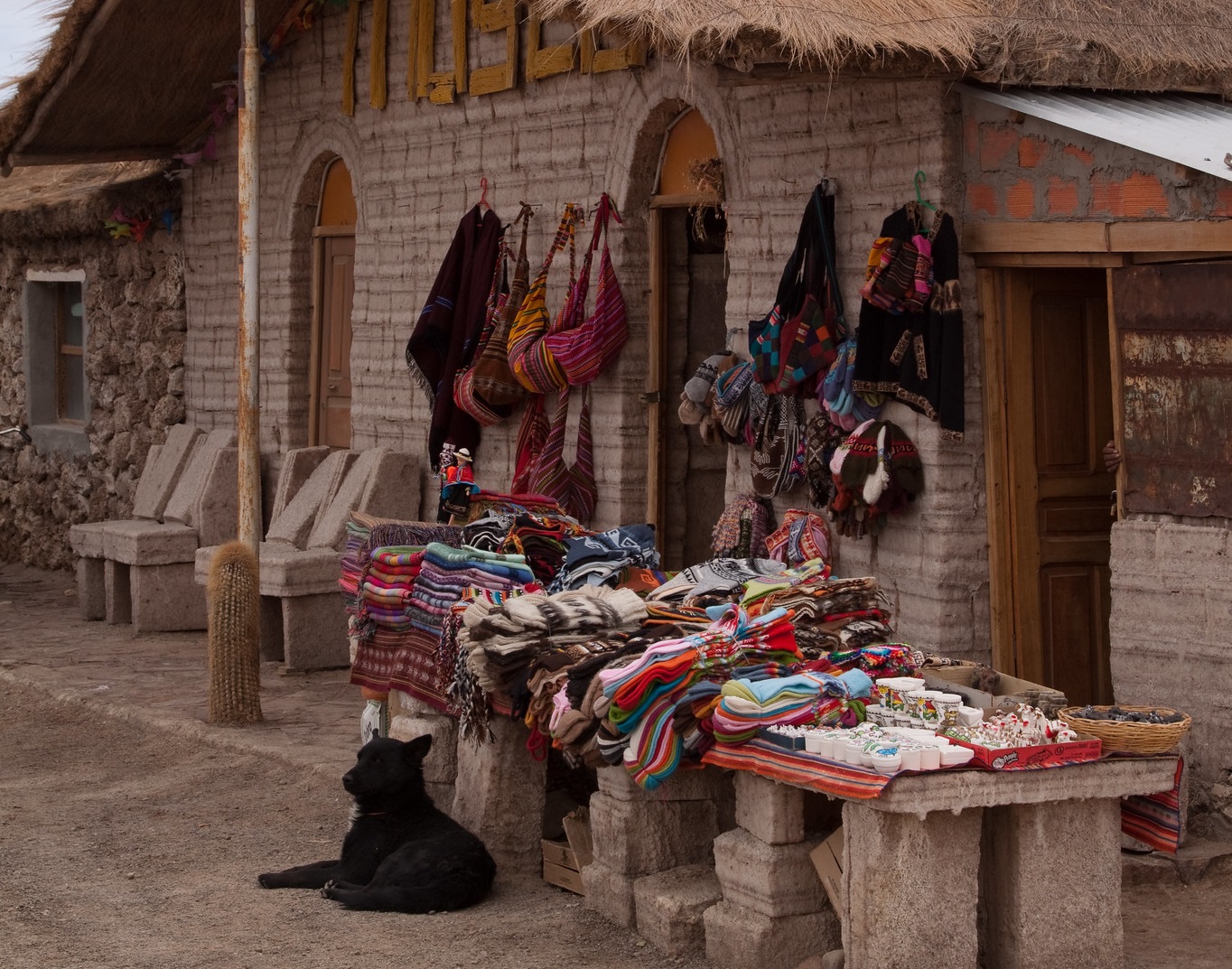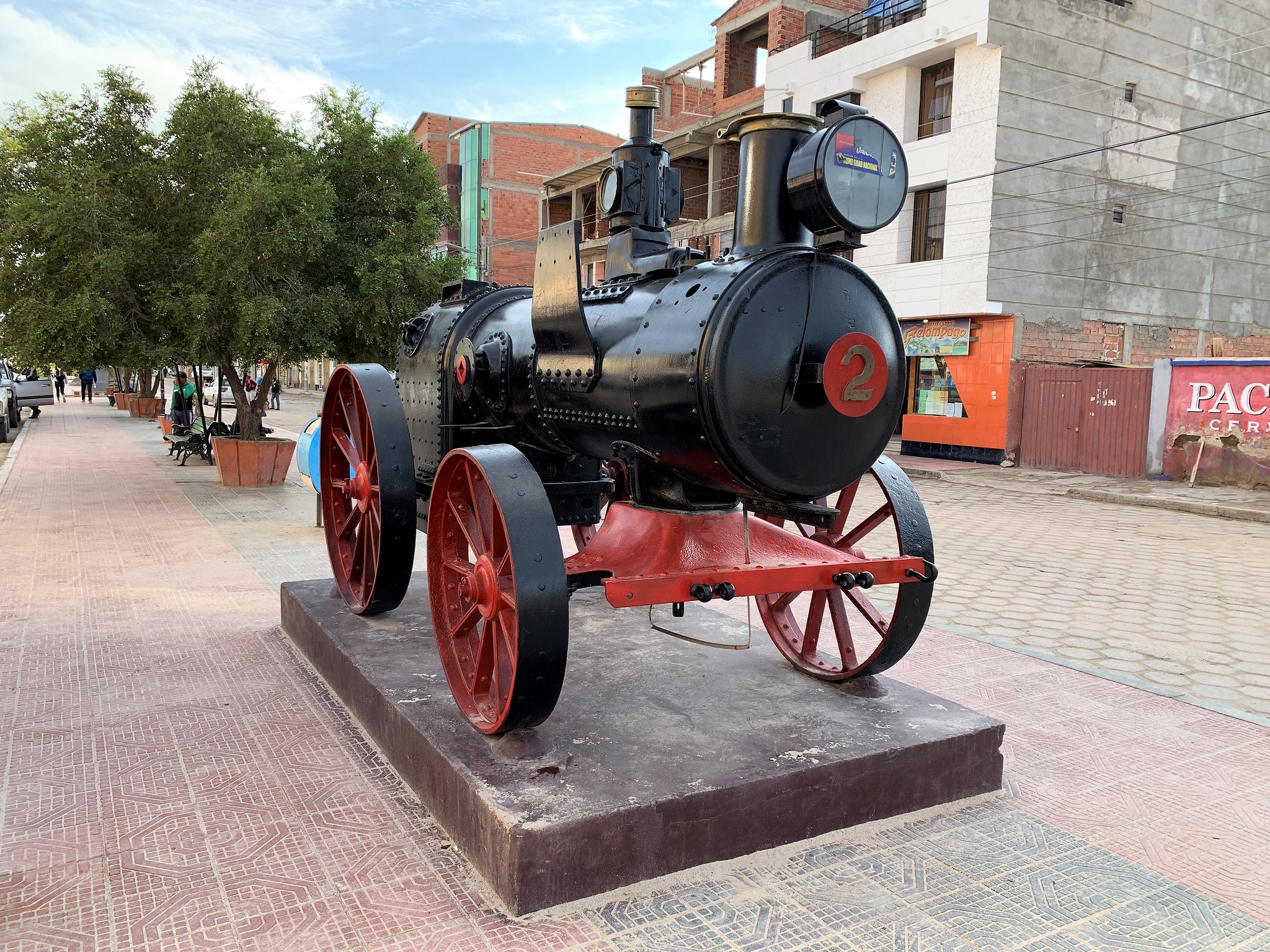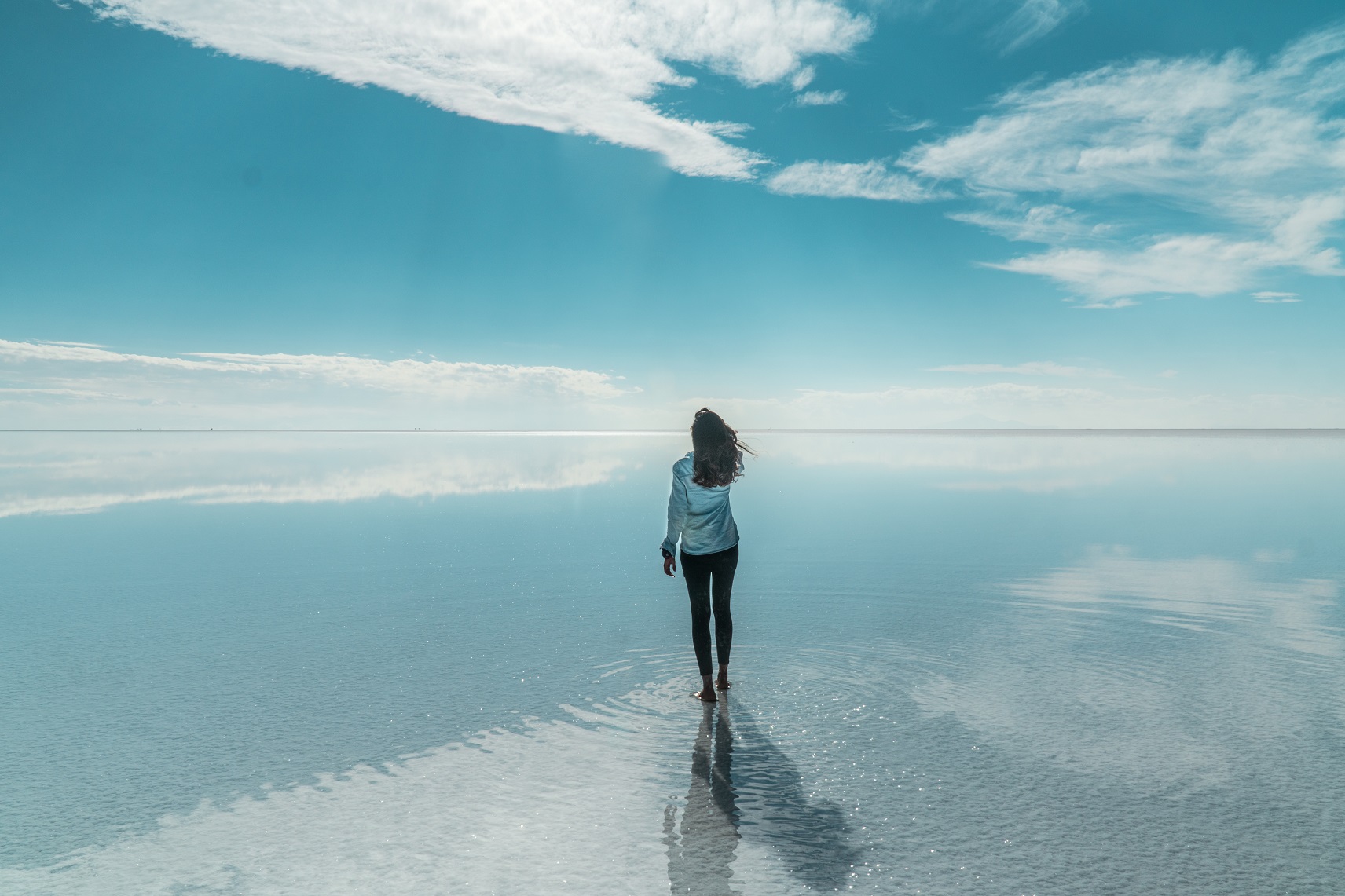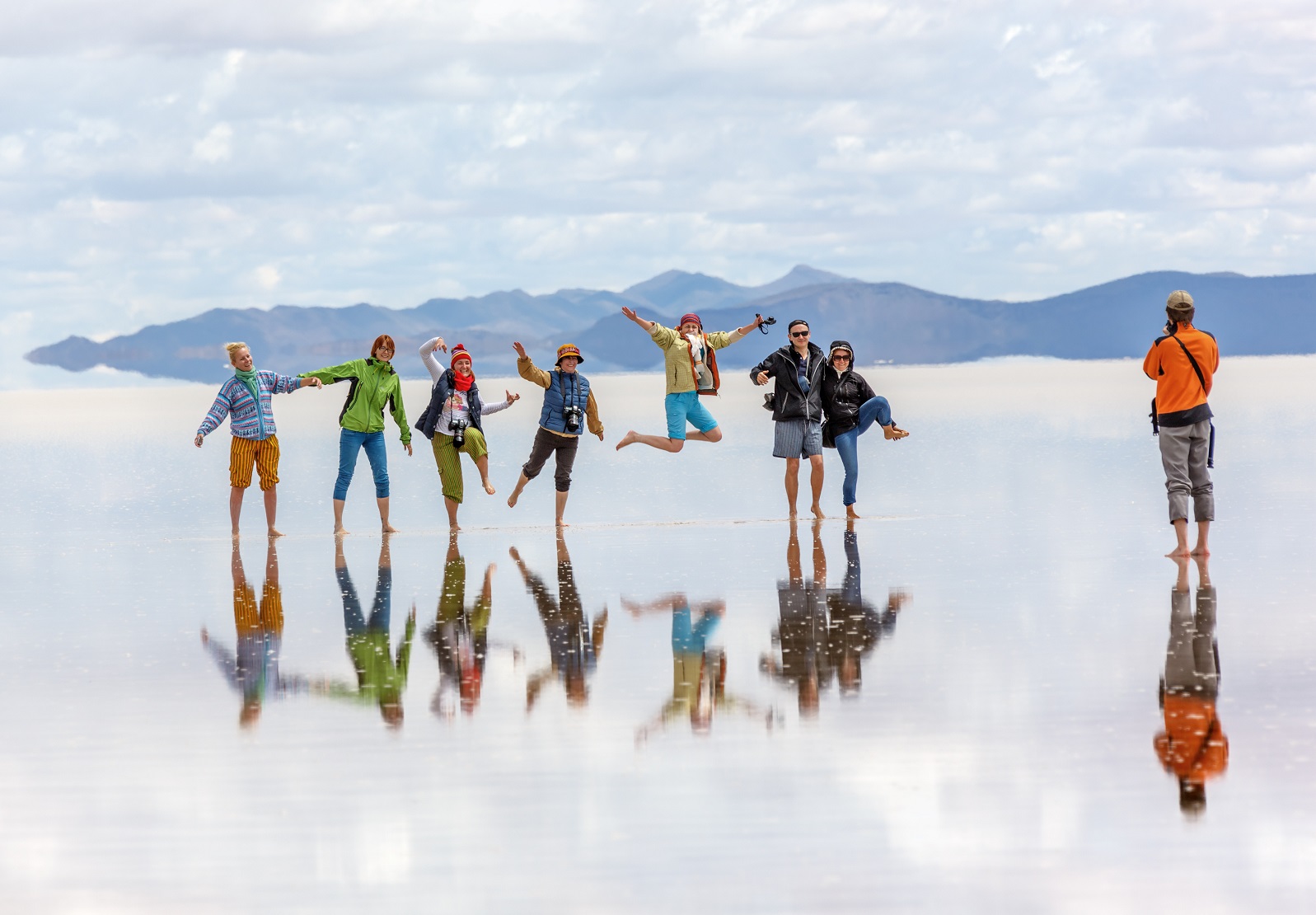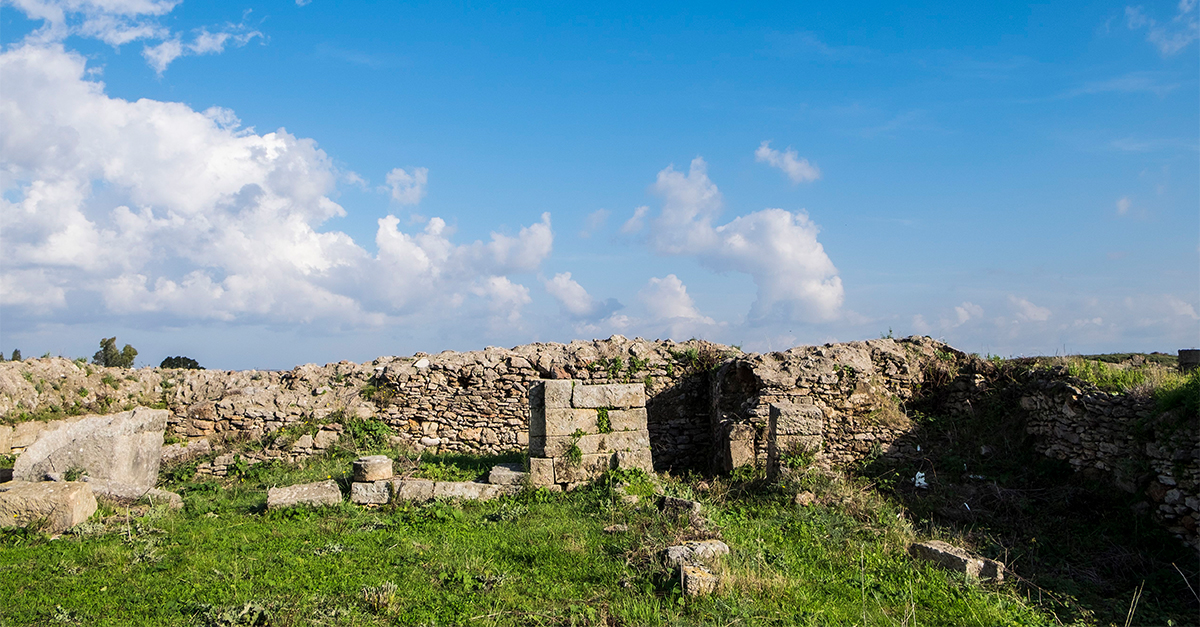The Biggest Mirror In The World
Salar de Uyuni in Bolivia, often dubbed “Mirror of the Sky”, is one of the most fascinating and unique natural wonders in the world. Tourists from all over the globe head to Bolivia specifically for this captivating destination.
From hotels made completely of salt, an ancient train graveyard, gigantic cacti, and unusual wildlife, this otherworldly location is sure to top your bucket list. Let's check it out.
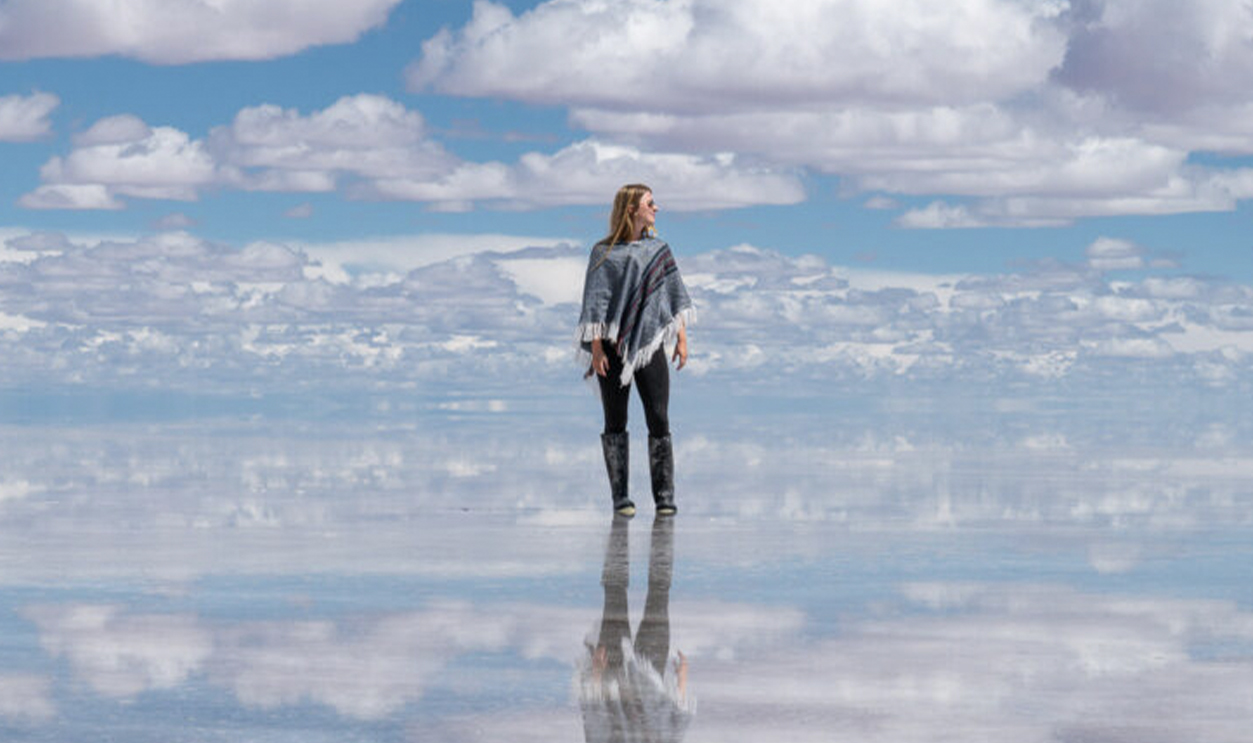
The Mirror Effect
Salar de Uyuni is actually a massive salt flat—an area of land covered with a crust of salt left by evaporation of water. When water accumulates on the surface it creates a stunning mirror effect that perfectly reflects the sky and clouds above. This magnificent view is the top reason people make the trip.
The Horizon, Or Lack Thereof
Due to the lack of horizon, the mirror effect gives off an optical illusion that looks absolutely incredible, drawing the attention of tourists and photographers looking for a truly unbelievable sight.
It is best seen during the rainy season—November to March—when it is covered in a thin layer of water which is optimal for reflection.
World Record
Salar de Uyuni is considered the world's largest salt flat on Earth, covering over 10,000 square kilometers (3, 900 square miles).
It sits at a high altitude of about 3,656 meters (11, 995 feet) above sea level, which can actually make some tourists sick from the altitude.
The Formation Of The Salt Flat
The massive salt flat was created roughly 40,000 years ago when several giant prehistoric lakes had evaporated, leaving behind salt and minerals.
The largest lake was Lake Minchin.
The Climate
The area has a relatively stable average temperature with a peak at 21 °C (70 °F) in November to January, and a low of 13°C (55°F) in June. The nights are cold all through the year, with temperatures between −9°C and 5°C (16 and 41°F).
Rainfall is also low. Even in the rainy season the number of rainy days is fewer than 5 per month.
 Mike, CC BY-SA 2.0, Wikimedia Commons
Mike, CC BY-SA 2.0, Wikimedia Commons
The Salt
The salt crust can be as deep as 10 meters (33 feet) in some places. Bolivia produces a large amount of salt from this flat, which is then used for various purposes, such as table salt.
The Salt Hotels
Tourists who come to the area can stay at one of the salt hotels in a nearby village called Colchani. Lunda Salada Hotel remains a top tourist favorite and is known as a secluded retreat for adventure. It is made almost entirely of salt.
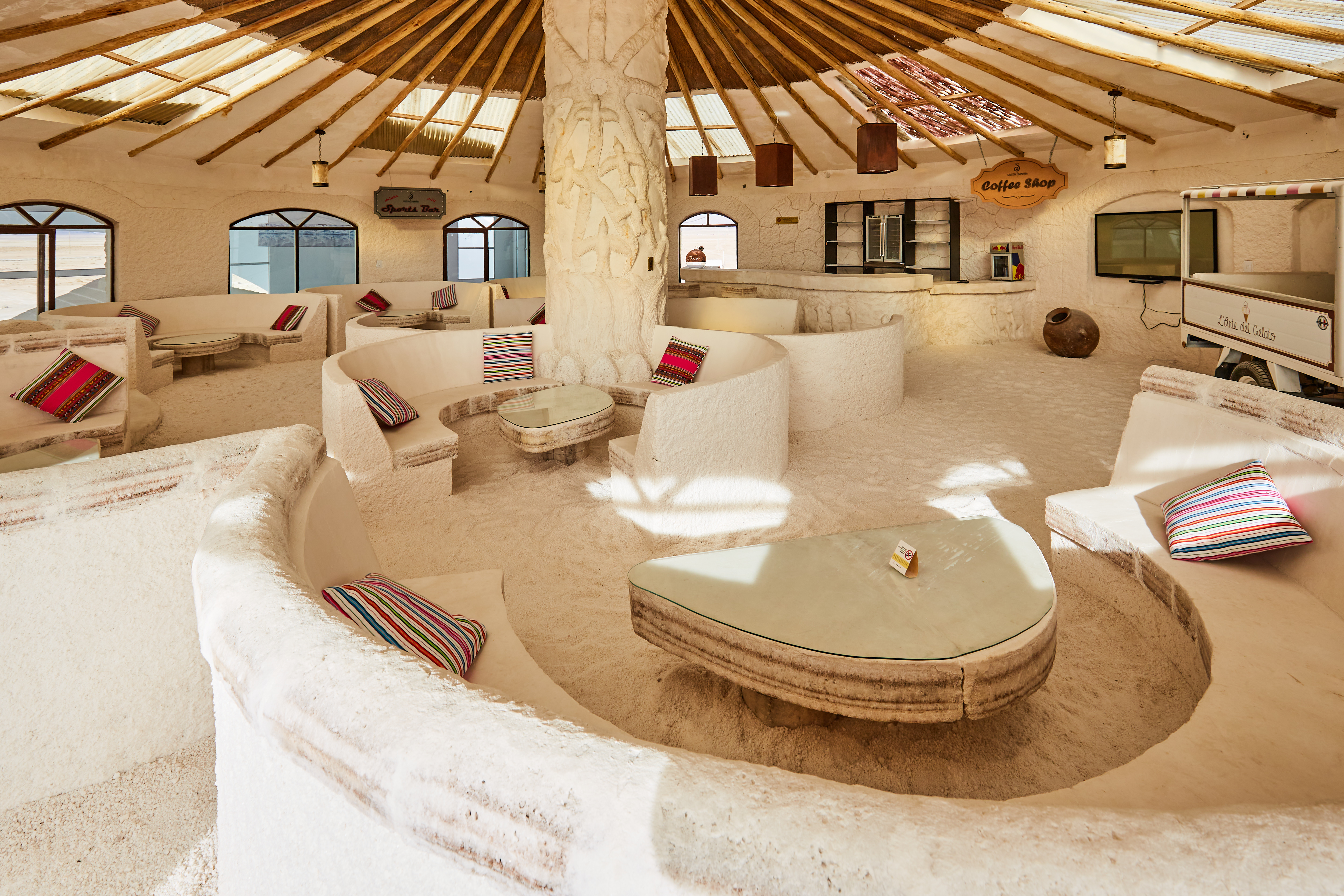 Vaido Otsar, CC BY-SA 4.0, Wikimedia Commons
Vaido Otsar, CC BY-SA 4.0, Wikimedia Commons
Salt Extraction
Salt is extracted daily from Salar de Uyuni for both local needs as well as international exports. Locals still manually extract salt from the flat using traditional methods for personal use.
Salt isn’t the only thing that Salar de Uyuni is rich in, though.
Lithium Reserves
Salar de Uyuni is estimated to hold about 5.4 million tonnes of lithium. This accounts for about 70% of the world’s known lithium reserves—a key element in batteries, but also used in lenses, spaceships, and medication.
Bolivia in general has 21 million tonnes of lithium, which is more than any other country in the world.
Wildlife
Salar de Uyuni is often described as one of the earth’s “sparsest landscapes”, as it is inhospitable to many species.
However, this isn’t true for all—it is home to several species of flamingos that feed in the saltwater lakes. Visitors can often see huge flocks congregating on the shiny lake.
As well, herds of vicunas like to watch tourists from the hills.
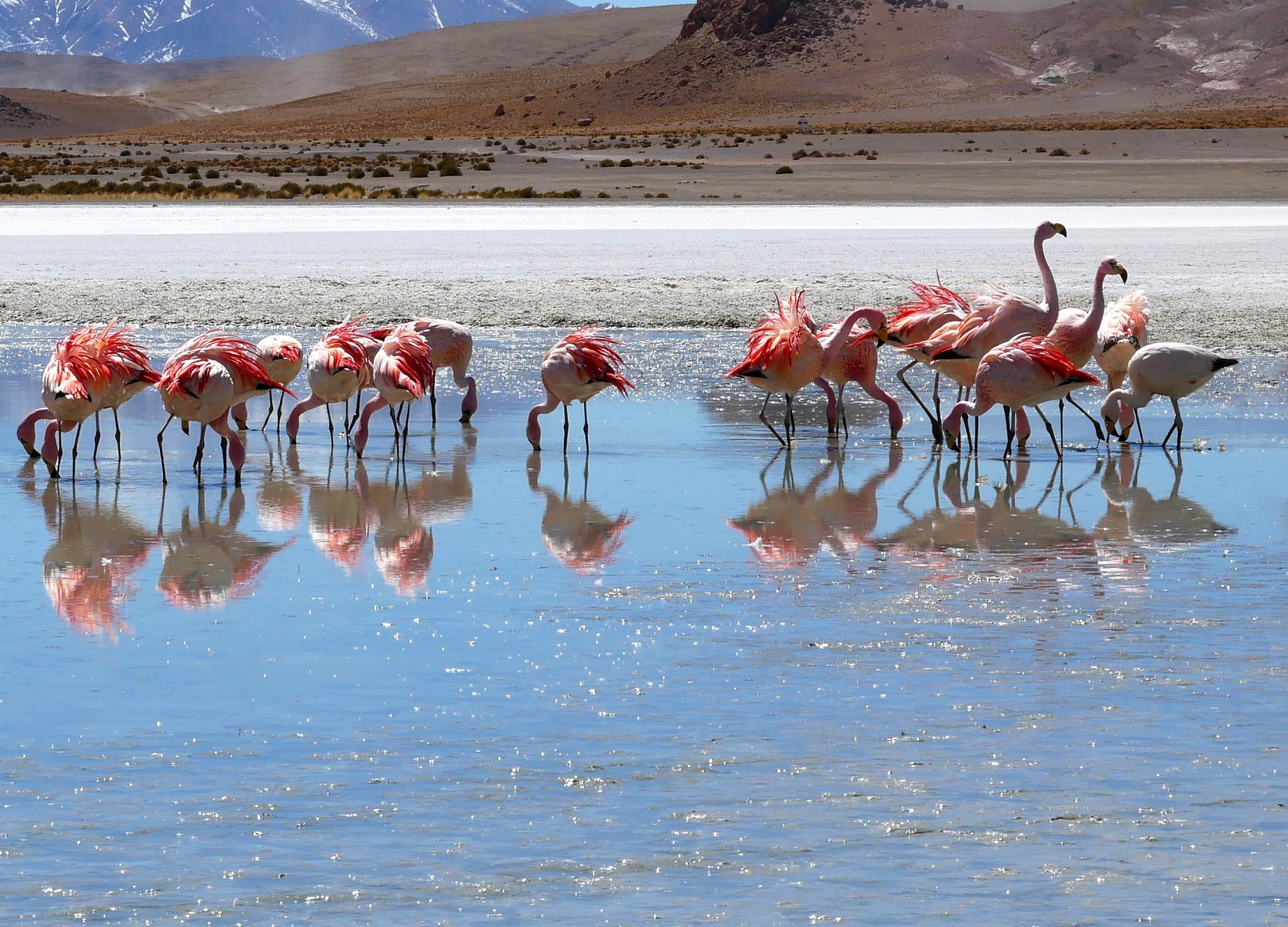 Loredana Habermann, Shutterstock
Loredana Habermann, Shutterstock
Geometric Patterns
When the salt is dry, it forms natural hexagonal patterns that look like a giant mosaic. The vast landscape is scattered with salt mounds—a result of the cracking of the salty surface.
These mounds stretch for as far as you can see, adding to the surreal atmosphere of the magical landscape.
Remote Location
Salar de Uyuni is a remote area, so visitors should plan their trips carefully and be prepared for limited amenities.
The small nearby village of Colchani is one of the only populated places in the area due to the harsh conditions. It has a small population of only 600 people.
Colchani
The small village of Colchani relies on salt-processing, using the salt and minerals from Salar de Uyuni. It is the largest salt-processing cooperative in Bolivia.
Tourists can stop here and purchase handicrafts made of salt, and textile art made of llama and alpaca, making it the perfect place to buy authentic Bolivian souvenirs.
The Salt Museum
Also in the village of Colchani is the Salt Museum—a tiny space made of salt bricks that holds a multitude of hand carved salt sculptures.
It isn’t a typical museum, as it is fairly small and only takes about 5-10 minutes to see everything. But it makes for some magical photographs!
Salt Islands
There are several islands within the large salt flat, such as Incahuasi Island, which is known for its giant cacti. This island is a top attraction for most visitors of Salar de Uyuni.
The island is situated in the middle of the salt flat, and was created years ago when the formation of the salt flat had begun.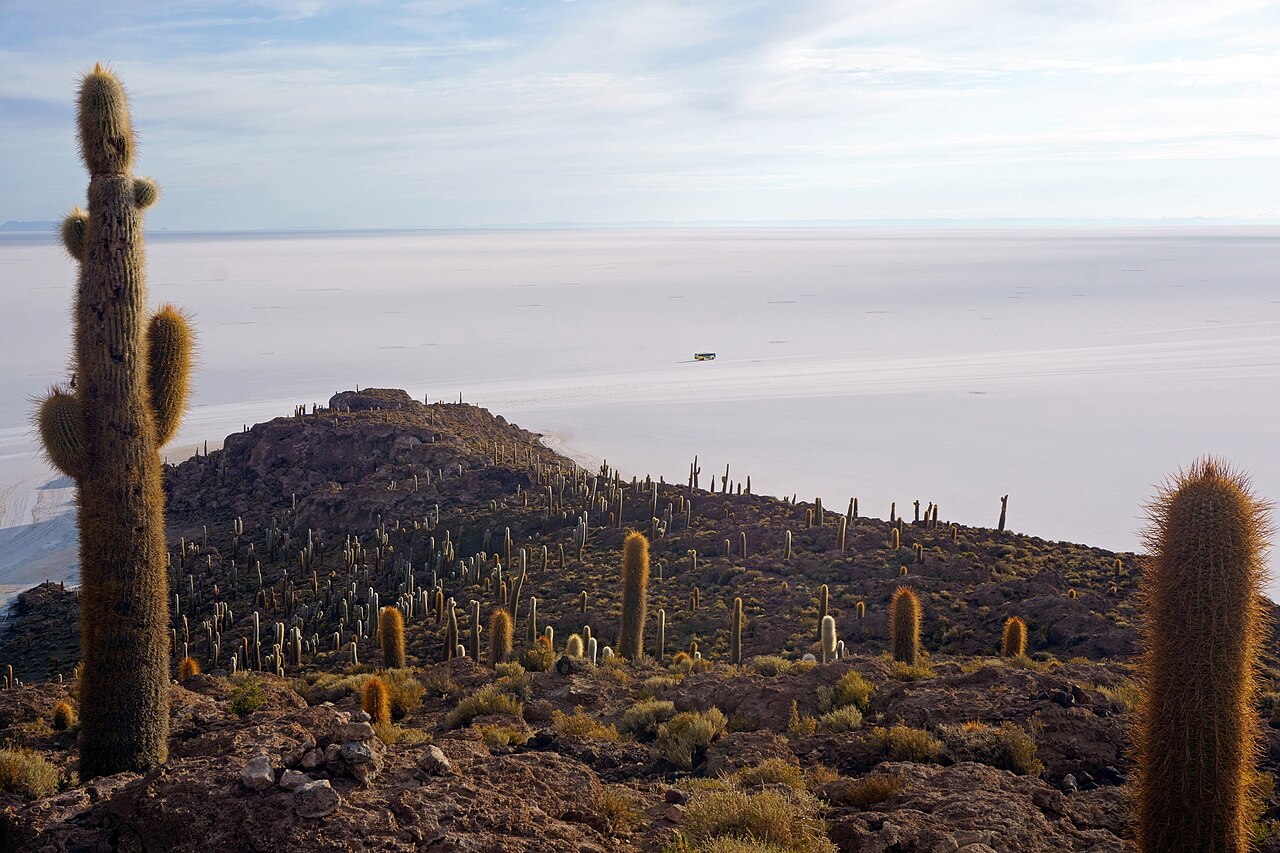 kallerna, CC BY-SA 4.0, Wikimedia Commons
kallerna, CC BY-SA 4.0, Wikimedia Commons
Incahuasi Island
The Incahuasi Island is one of the most interesting sites in Uyuni. The terrain is covered in a native species of cactus, and the island is surrounded in the flat sea of hexagonal shapes.
The giant cacti are hundreds of years old and grow at a rate of one centimeter per year. Most of them are more than two meters high with some even reaching a whopping 10 meters.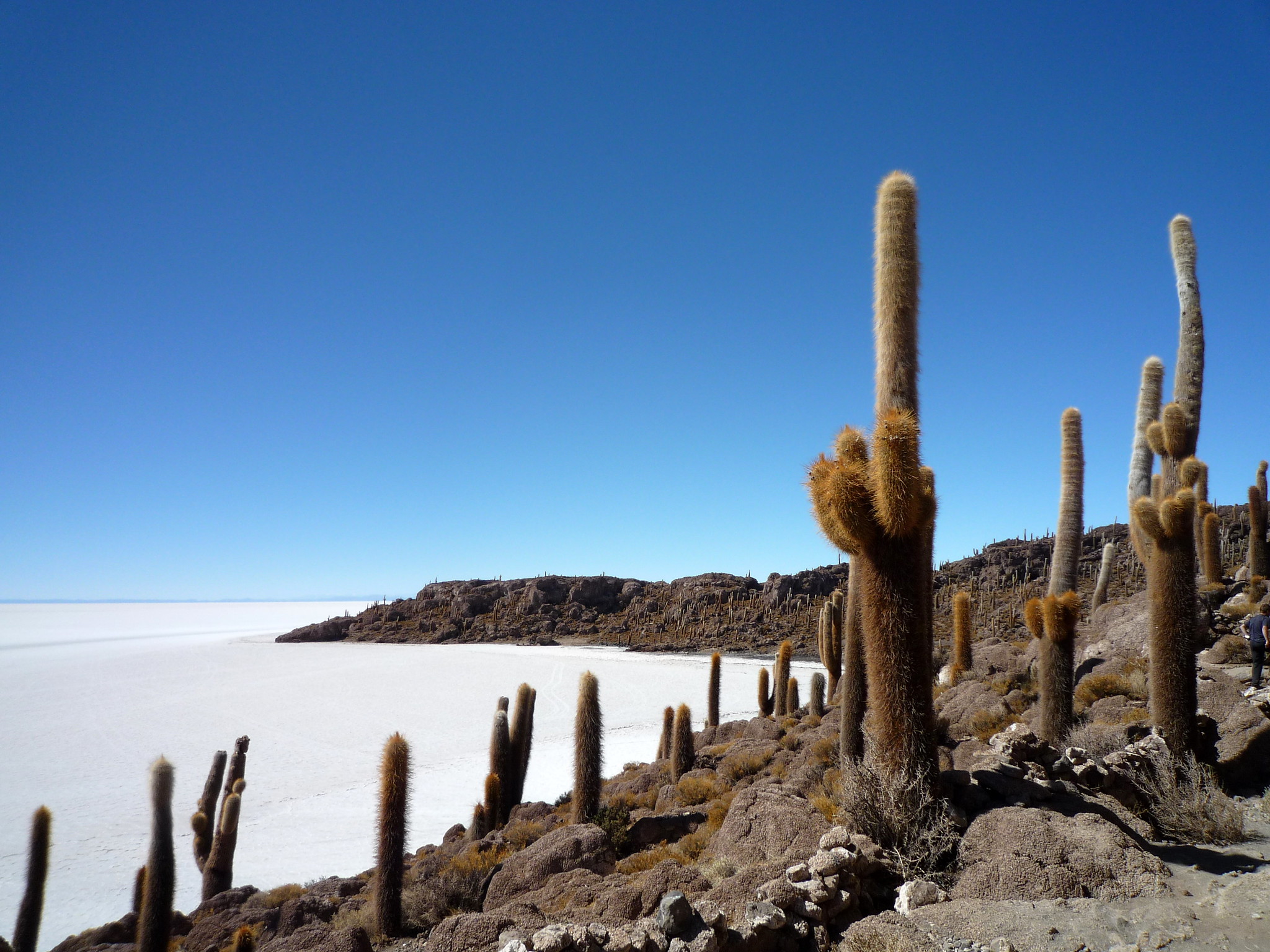 twiga269 FEMEN, Flickr
twiga269 FEMEN, Flickr
The Train Graveyard
One of the most popular tourist attractions in this area is the ‘Cementerio de Trenes’ or Great Train Graveyard.
All salt flat tours in the area stop at this train graveyard, where the local tour guide will give a detailed history and description of the site.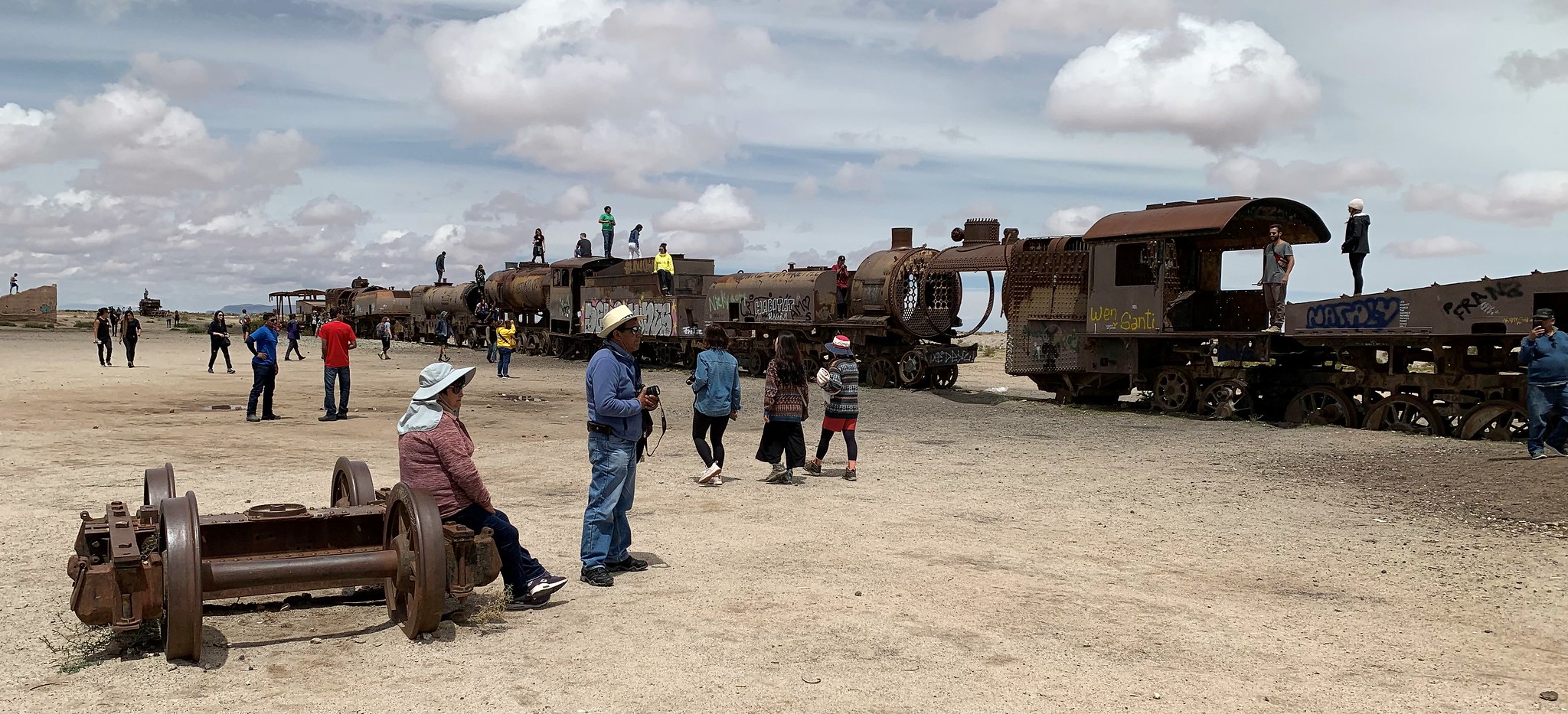 Elias Rovielo, Flickr
Elias Rovielo, Flickr
The Train Graveyard
The Great Train Graveyard is a result of the collapse of the mining industry back in the 1940s. Prior to that, Uyuni was a major transportation hub for trains in South America.
Many trains were abandoned and instead of decommissioning the trains and selling them, the people of Uyuni left the trains to rot, leaving the mass train cemetery we see today.
The Effects of the Salt on the Train Graveyard
What adds to the rotting train spectacle is the fact that the appearance of the ruins has been impacted by the salt winds. The salty climate has corroded all of the metal from the trains, leaving behind an interesting site of rusty scraps.
Visitors are free to climb and explore.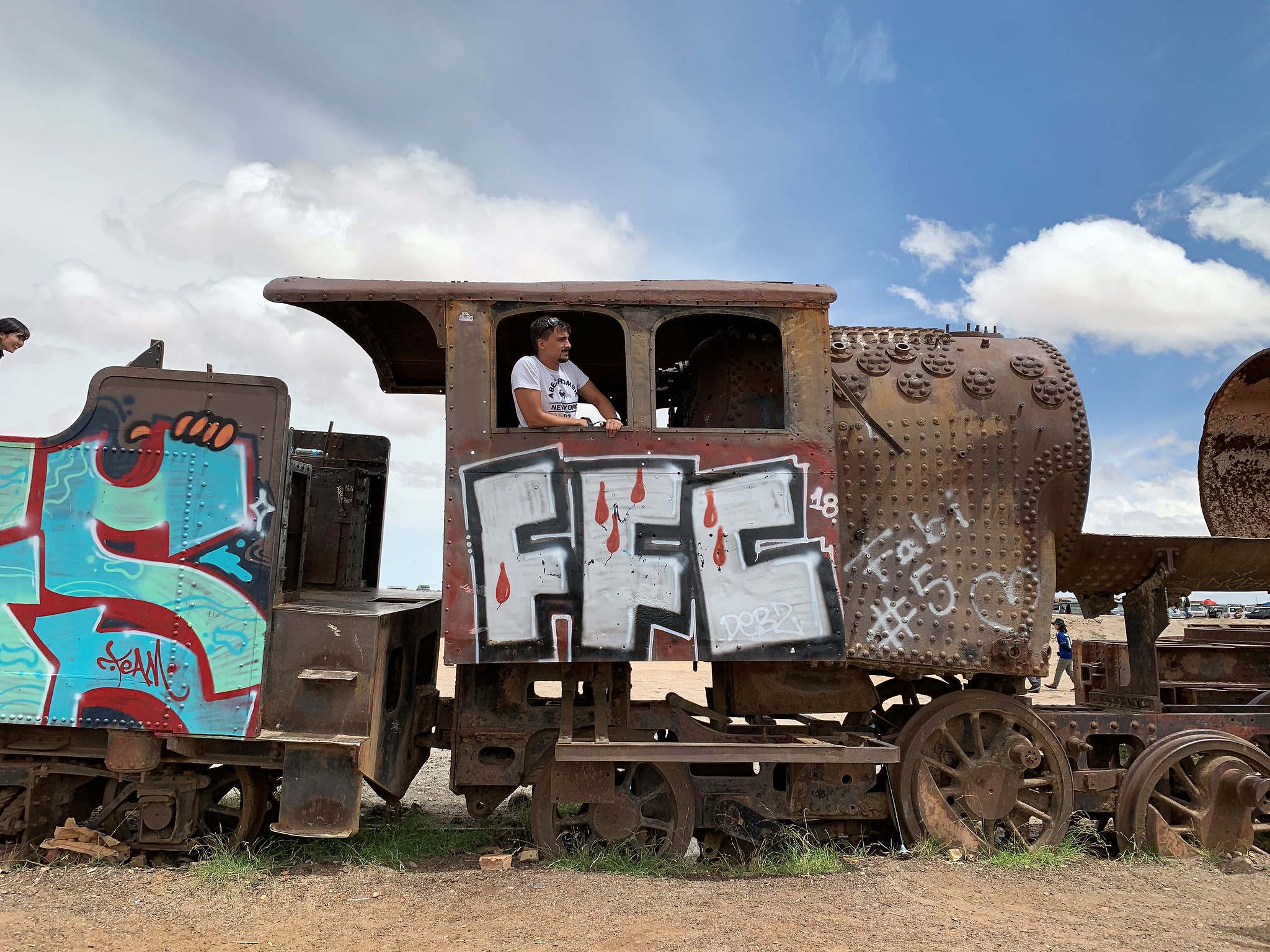 Elias Rovielo, Flickr
Elias Rovielo, Flickr
The Mirror Effect Helps with GPS Calibration in Space
Aside from just beauty, the Mirror of the Sky aids in an important job as well: GPS calibration from space.
Typically, GPS satellites are calibrated by reflecting light off of the ocean. But when the magic mirror of Salar de Uyuni shines during rainy season, scientists are just as excited as tourists.
The reflectiveness of the salt flats is far more effective at satellite calibration than the ocean’s surface.
Final Thoughts
There you have it, several incredible facts about Salar de Uyuni, the Mirror of the Sky, in Bolivia. With its rich history and countless intriguing tourist attractions, this natural wonder is an incredible sight to see.
Professional tours are encouraged if you’re looking to experience all of what Salar de Uyuni has to offer.
You May Also Like:
Cenote Angelita: The World’s Most Unique Dive
7 Bizarre Hotels You Should Visit Before They're Popular
The Natural Phenomenon That's On The Verge Of Disappearing

